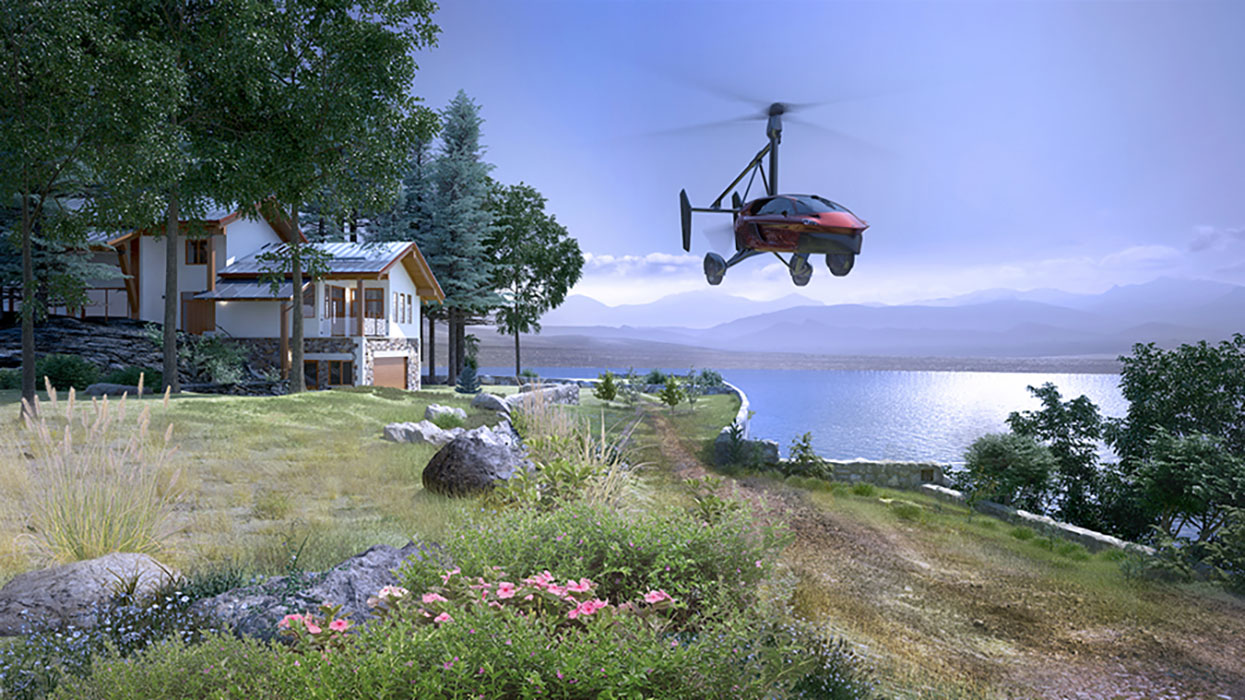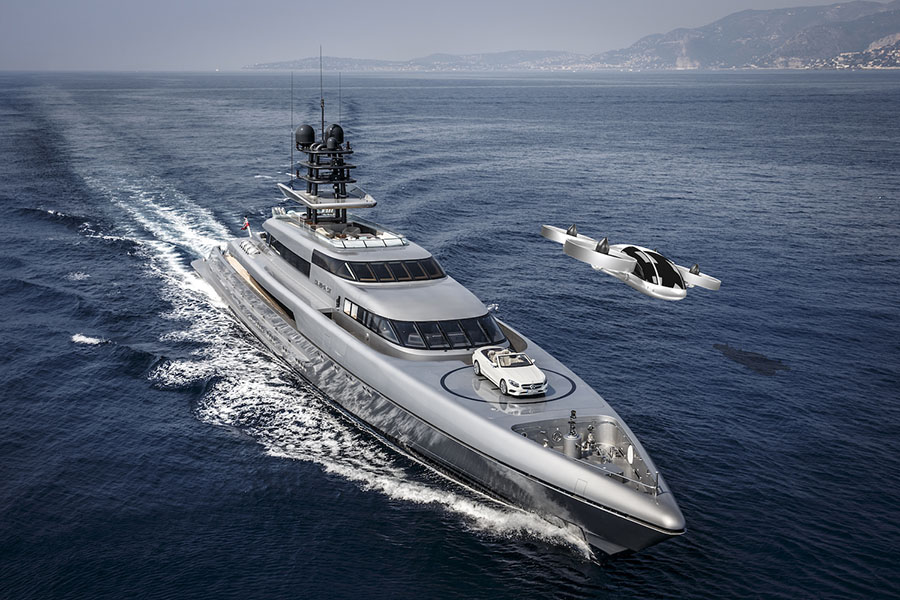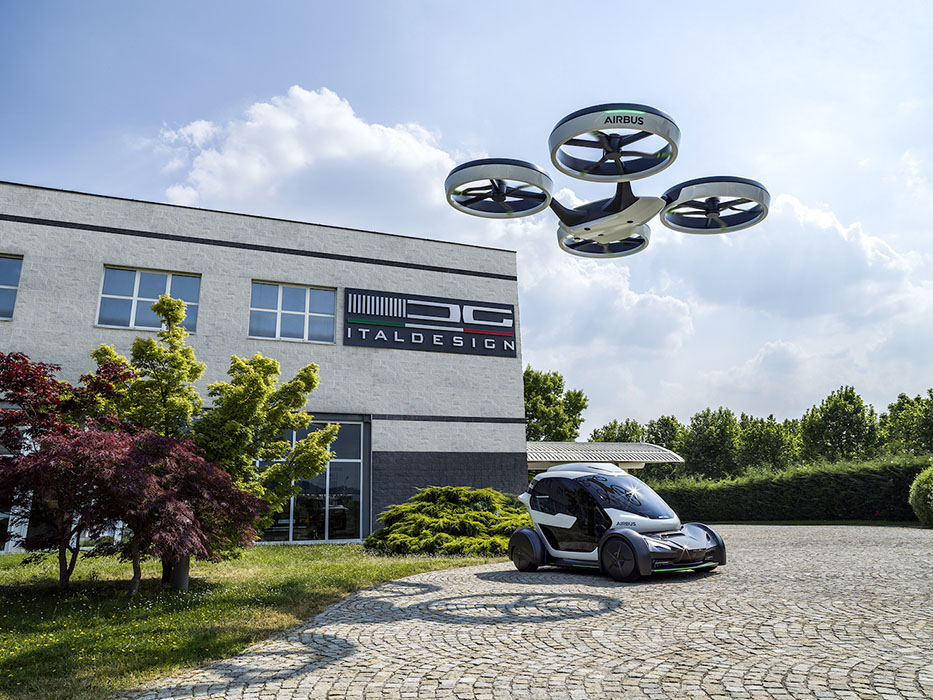This website uses cookies so that we can provide you with the best user experience possible. Cookie information is stored in your browser and performs functions such as recognising you when you return to our website and helping our team to understand which sections of the website you find most interesting and useful.
The three flying cars set to revolutionise our roads
By Rachel Ingram | 15 August 2017 | Cars & Yachts
Say goodbye to traffic jams as these hybrid airborne cars get ready to take off

Los Angeles. The City of Angels. Or for many, a more accurate synonym would be The City of Traffic. While not as sexy, this is a more realistic view of one of the most famously congested cities in the world. Mexico City, Bangkok, Beijing, Moscow, London… cities across the globe are facing a major pandemic as roads struggle to handle increasing numbers of drivers. To tackle the problem, we’ve gone underground but with many subway systems at maximum capacity, there’s only one place left to explore: the sky.
Airborne vehicles have been the stuff of science fiction stories for many decades, but ‘flying cars’ are set to become a reality, and sooner than you’d think. Battling issues such as congestion and emissions, driving-flying vehicles are the ultimate hybrid. Following the Goodwood Festival of Speed, we look at three revolutionary vehicle concepts set to take everyday travel to great heights.
PAL-V Liberty
Liberty – freedom from control, restriction and, now, gravity. Created by Dutch flying car developer PAL-V, this three-wheel gyrocopter (above) has been in development for more than 15 years. Interchanging effortlessly between a car and a plane, the Liberty can reach 100 mph on the ground, and fly up to 11,480 feet in the air. It requires just 590 feet of space for a takeoff roll (compared to the thousands required by a plane). Powering it inside is an unique Rotex engine-based dual-propulsion drivetrain, while its moving parts are carefully tucked away for when needed – the rotors fold above the vehicle and propeller is compacted into the rear.
But don’t think it’s as simple as driving along, pressing fly mode and you’re up, up and away. Firstly, it takes some time to switch between drive and fly modes – five to 10 minutes, engineers say. Secondly, operators are required to have a gyroplane pilot’s license to fly the vehicle, which makes full use of the latest developments in artificial intelligence. However, training sessions are included in the purchase package – which starts at $399,000 (£306,000) for the standard Liberty Sport and $599,000 (£460,000) for the Pioneer Edition.
Test flights have been carried out since 2012 and now the PAL-V (which stands for Personal Air and Land Vehicle) are ready to start taking orders for the final product. Deliveries are due to roll out before the end of 2018 so place your order soon to be first in line.

Italdesign-Airbus Pop.Up
The ‘pop up’ is a phrase usually reserved to describe a short-term dining or shopping outlet. Taking the phrase to a more literal extent is this futuristic hybrid driving-flying machine from Italdesign and Airbus, Pop.Up (above). The opposite of short-term, this vehicle is a solid example of the future of travel.
Designed as a proposed solution to the urban traffic that slows down the world’s fastest cities, the conceptual two-passenger pod blurs the lines between cars and drones. Operators sit in a pod, from which they control a battery-powered ground module. Say they hit traffic or an emergency? They simply press a button to call the air module (powered by eight counter-rotating rotors) from a nearby charging station, which then, literally picks the passenger pod up by its roof and carries it to the final destination. What’s more, the modular concept vehicle is fully electric with zero emissions, making it good for the environment as well as for traffic-dodging.
Pop.Up was unveiled at the Geneva Motor Show and while neither Airbus nor Italdesign have committed to a timeline to make their concept a reality, we’re just happy knowing it’s in the pipeline and that flying above the gridlock could, one, day, be the norm. It’s expected to be in the skies by 2030.

VRCO Neo X-Craft
Another major VTOL (vertical take-off and landing) machine (above) is being made a little close to home, here in the UK. The Neo X-Craft, being developed by Nottingham-based company VRCO, is an innovative British designed and built “quadcopter”. While similar in concept to the Pop.Up, the key difference with the Neo X-Craft falls when it lands. Instead of having a separate driving and flying module, this vehicle’s propellers turn into wheels, meaning that it’s all in one piece. Utilising the power of a drone and the technology of a helicopter, this concept car is a true example of engineering genius. There’s also a host of smart features, such as an aerodynamic design to give it lift and even an emergency parachute.
Techies were treated to a hologram presentation at the Goodwood Festival of Speed’s Future Lab last month. While there is no physical model yet, CEO and co-founder Daniel Hayes says the real thing could be on the road by 2020 if development goes smoothly and testing is successful.
Hayes adds: “The VRCO NeoXCraft has the potential to transform our dependency on road infrastructure. Imagine in five years’ time seeing 10 air traffic lanes over Nottingham with vehicles flying in controlled corridors, safely interacting with each other. The concept will ease congestion on a massive scale, and as the vehicle is electric, we will see a significant reduction in Co2.”







